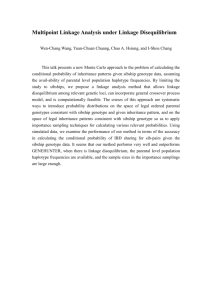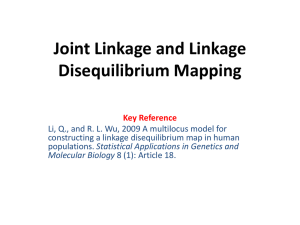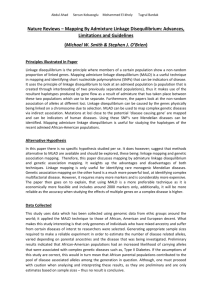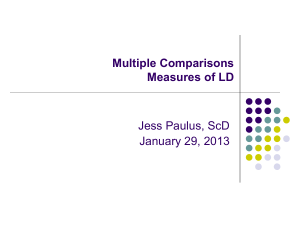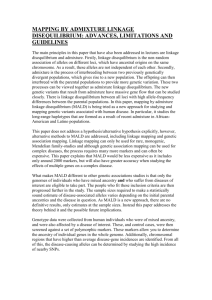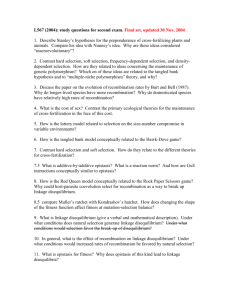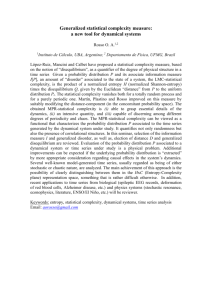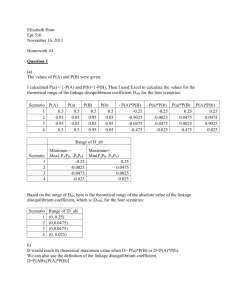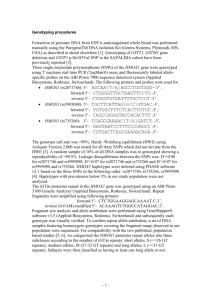SR1_Questions - Crop and Soil Science
advertisement
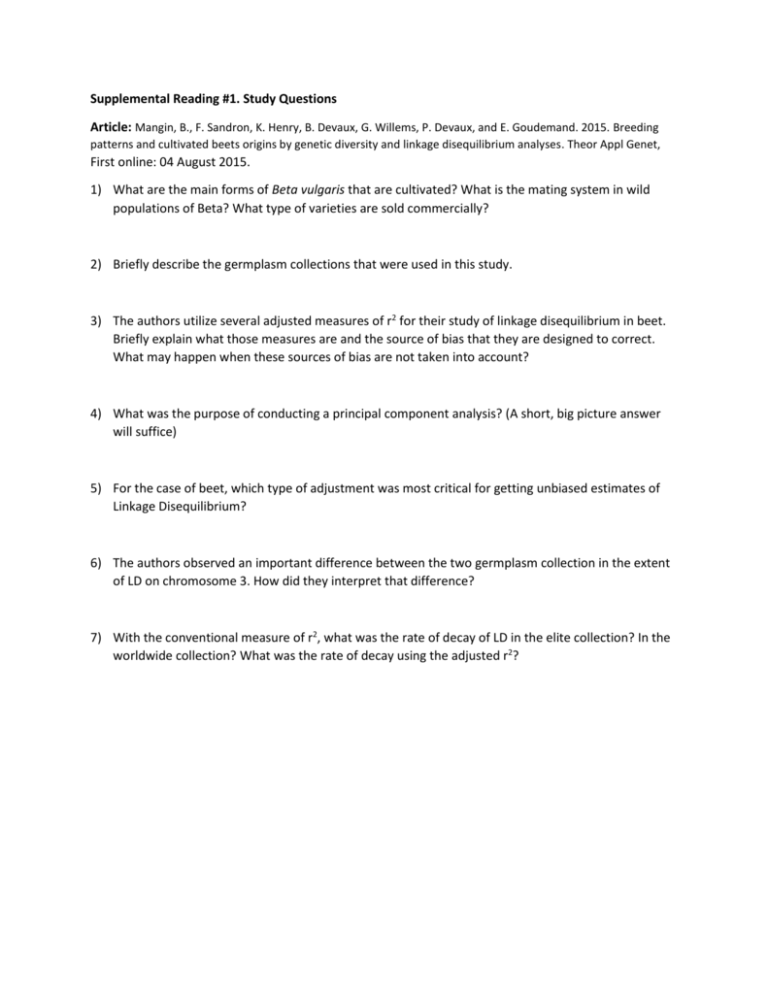
Supplemental Reading #1. Study Questions Article: Mangin, B., F. Sandron, K. Henry, B. Devaux, G. Willems, P. Devaux, and E. Goudemand. 2015. Breeding patterns and cultivated beets origins by genetic diversity and linkage disequilibrium analyses. Theor Appl Genet, First online: 04 August 2015. 1) What are the main forms of Beta vulgaris that are cultivated? What is the mating system in wild populations of Beta? What type of varieties are sold commercially? 2) Briefly describe the germplasm collections that were used in this study. 3) The authors utilize several adjusted measures of r2 for their study of linkage disequilibrium in beet. Briefly explain what those measures are and the source of bias that they are designed to correct. What may happen when these sources of bias are not taken into account? 4) What was the purpose of conducting a principal component analysis? (A short, big picture answer will suffice) 5) For the case of beet, which type of adjustment was most critical for getting unbiased estimates of Linkage Disequilibrium? 6) The authors observed an important difference between the two germplasm collection in the extent of LD on chromosome 3. How did they interpret that difference? 7) With the conventional measure of r2, what was the rate of decay of LD in the elite collection? In the worldwide collection? What was the rate of decay using the adjusted r2?


